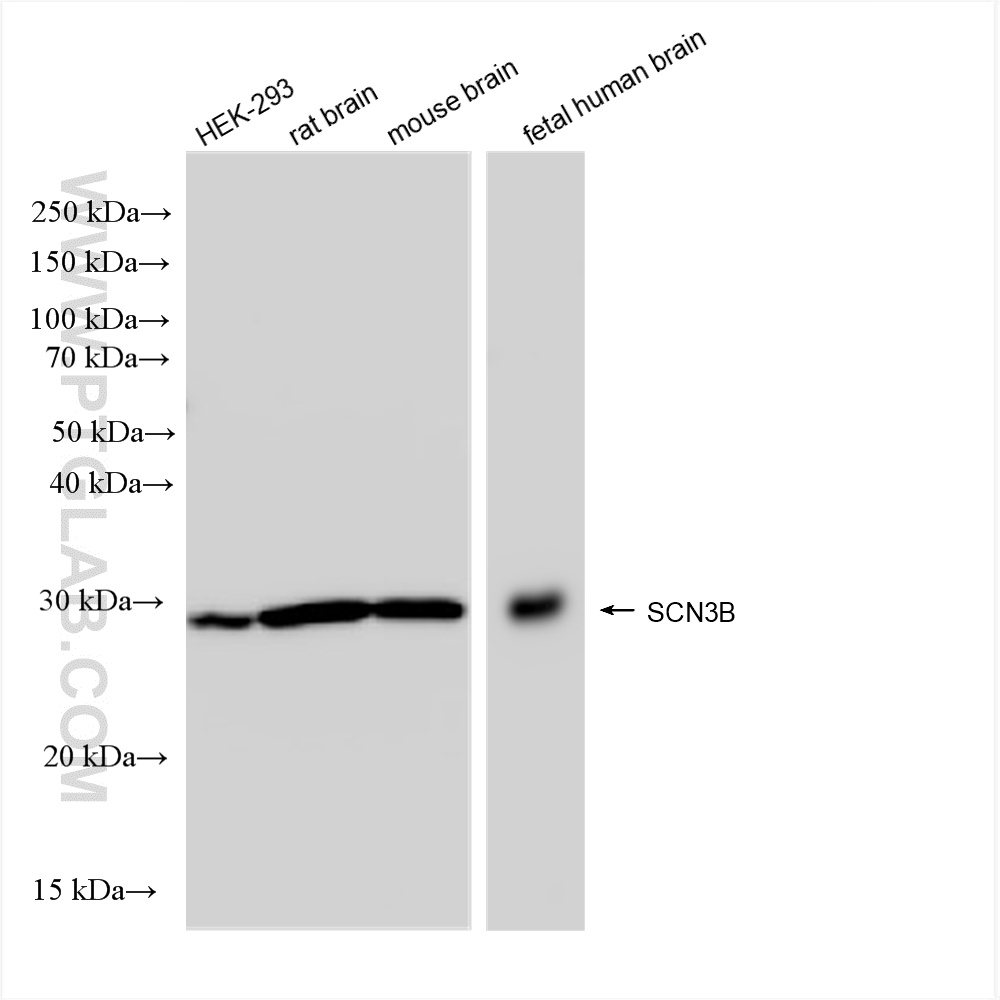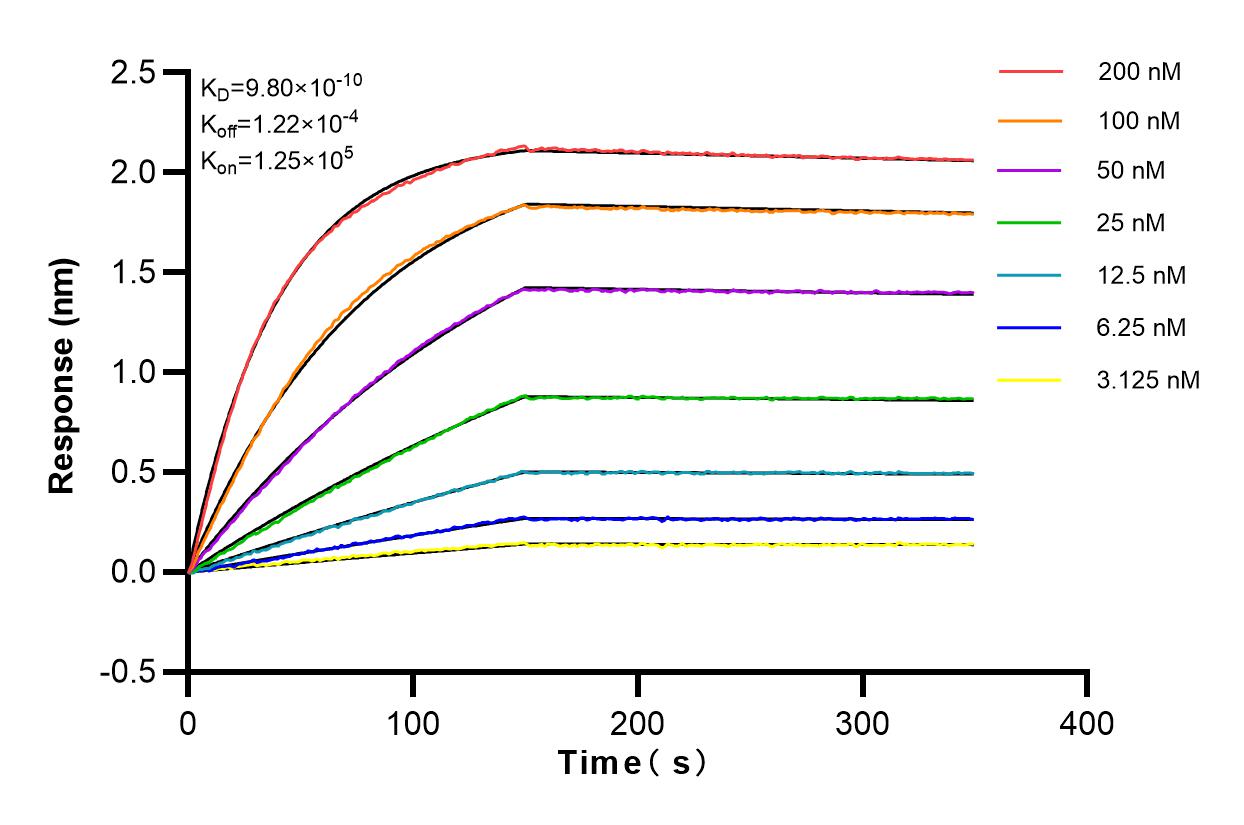验证数据展示
经过测试的应用
| Positive WB detected in | HEK-293 cells, rat brain tissue, mouse brain tissue, fetal human brain tissue |
推荐稀释比
| 应用 | 推荐稀释比 |
|---|---|
| Western Blot (WB) | WB : 1:5000-1:50000 |
| It is recommended that this reagent should be titrated in each testing system to obtain optimal results. | |
| Sample-dependent, Check data in validation data gallery. | |
产品信息
82959-7-RR targets SCN3B in WB, ELISA applications and shows reactivity with Human, mouse, rat samples.
| 经测试应用 | WB, ELISA Application Description |
| 经测试反应性 | Human, mouse, rat |
| 免疫原 | SCN3B fusion protein Ag23201 种属同源性预测 |
| 宿主/亚型 | Rabbit / IgG |
| 抗体类别 | Recombinant |
| 产品类型 | Antibody |
| 全称 | sodium channel, voltage-gated, type III, beta |
| 别名 | HSA243396, KIAA1158, SCN3B, SCNB3, Sodium channel subunit beta 3 |
| 观测分子量 | 28 kDa |
| GenBank蛋白编号 | BC126265 |
| 基因名称 | SCN3B |
| Gene ID (NCBI) | 55800 |
| RRID | AB_3670704 |
| 偶联类型 | Unconjugated |
| 形式 | Liquid |
| 纯化方式 | Protein A purfication |
| UNIPROT ID | Q9NY72 |
| 储存缓冲液 | PBS with 0.02% sodium azide and 50% glycerol , pH 7.3 |
| 储存条件 | Store at -20°C. Stable for one year after shipment. Aliquoting is unnecessary for -20oC storage. |
背景介绍
The sodium channel is a multi-subunit protein complex composed of a single large α-subunit along with smaller additional β-subunits. There are at least three different β-subunit genes, SCN1b, SCN2b, and SCN3b, all of which are expressed widely in excitable tissues. The bands on Western blots for SCN3b (45-50 kDa) were significantly larger than the predicted molecular weight, which is consistent with the protein being glycosylated. The two bands on the Western blot could be due to different levels of glycosylation or alternative spliced isoforms. (PMID: 11744748)
实验方案
| Product Specific Protocols | |
|---|---|
| WB protocol for SCN3B antibody 82959-7-RR | Download protocol |
| Standard Protocols | |
|---|---|
| Click here to view our Standard Protocols |

